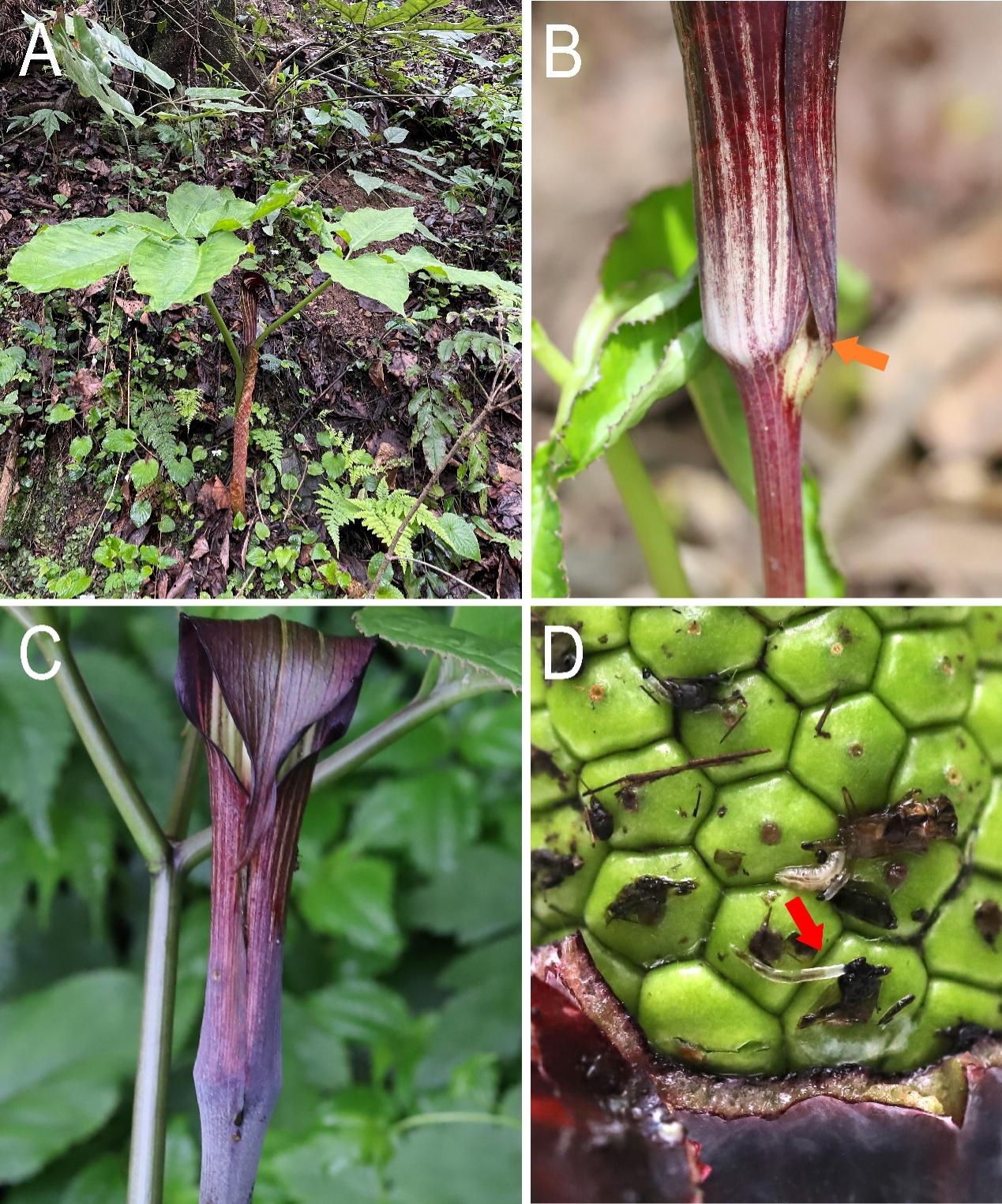
Most species within the plant genus Arisaema display a remarkable sexual dimorphism in the morphology of their spathes. Male inflorescences have a basal exit that allows visiting fungus gnats (Diptera) to escape after transferring pollen, while female inflorescences function as "lethal kettle traps," which fatally capture visiting gnat pollinators. This seemingly antagonistic relationship has puzzled researchers for a long time: how can such a relationship persist evolutionarily if pollinators are killed?
A research team from the Wuhan Botanical Garden of the Chinese Academy of Sciences (CAS) has uncovered a hidden mutualism that may clarify this paradox. Through extensive field observations and laboratory analysis of Arisaema bockii in a subtropical forest in China, the researchers found that fungus gnats lay their eggs inside the female spathes of Arisaema species. They documented the full life cycle of the fungus gnats—from egg to larva, pupa, and finally adult—all developing within these inflorescences, which serve as both oviposition sites and nurseries.
However, since the plant does not provide a food reward, the source of nourishment for the larvae remained a mystery. Through observation, the researchers discovered that the decaying bodies of adult fungus gnats, trapped in the kettle trap, serve as a vital nutritional resource for larval development. This indicates a form of hidden mutualism: Arisaema provides breeding grounds for the fungus gnat offspring, while the larvae feed on the corpses of their conspecifics to survive. This mechanism may help explain the long-term maintenance of this unique pollination system.
The study has been published in the journal Ecology. This work was supported by the National Natural Science Foundation of China and the CAS Strategic Priority Research Program.

Inflorescence of Arisaema bockii and the fungus gnat larvae feeding on adult corpses. (A) A. bockii in the natural habitat. (B) Male inflorescence of A. bockii; the orange arrow indicates the basal exit hole through which fungus gnats escape after visiting. (C) Female inflorescence of A. bockii, which lacks an exit hole and traps fungus gnats, serving as an oviposition site. (D) Fungus gnat larvae feed on decaying adult carcasses. (Image by HUANG Wen)

86-10-68597521 (day)
86-10-68597289 (night)

52 Sanlihe Rd., Xicheng District,
Beijing, China (100864)

